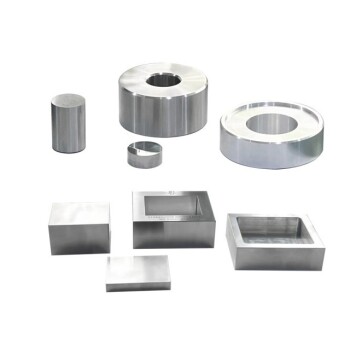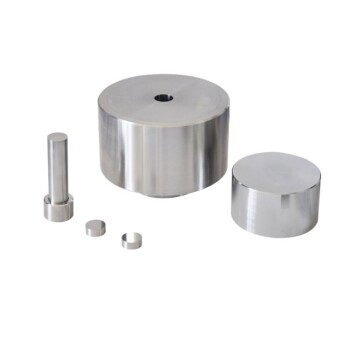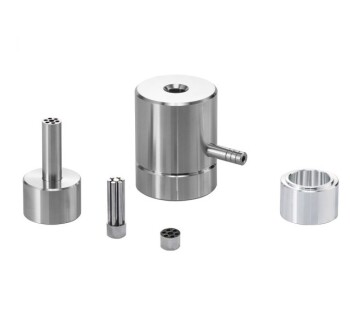In essence, heated lab presses are used to precisely shape, compact, or bond materials by applying both controlled heat and pressure simultaneously. Their primary applications range from preparing solid samples for spectroscopic analysis and creating thin polymer films to forming pharmaceutical pills and laminating composite materials.
A heated lab press is more than a simple vise with a heater. It is a precision instrument designed to manipulate a material's internal structure and physical form, making it an indispensable tool for research, development, and quality control across numerous scientific fields.
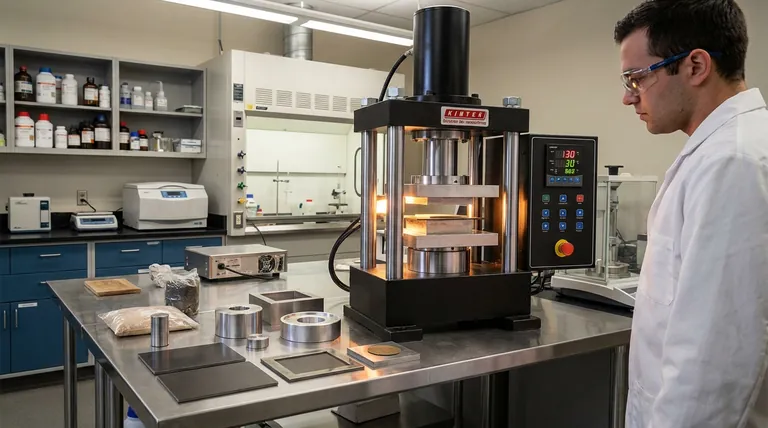
The Core Principle: Controlled Material Transformation
The fundamental value of a heated lab press lies in its ability to apply energy to a sample in two forms—thermal (heat) and mechanical (pressure)—in a highly controlled and repeatable manner.
Combining Heat and Pressure
By applying heat, the press modifies a material's internal energy. This can soften a polymer, initiate a chemical reaction (curing), or help particles bind together.
Simultaneously, the application of force compacts the material, removes voids, ensures uniform density, and shapes it into a desired form like a pellet, film, or plaque.
From Powder to Solid Form
Many analytical techniques require solid samples. A heated press excels at taking a loose powder and compacting it into a dense, homogeneous pellet or briquette.
This is critical for techniques where sample consistency directly impacts the accuracy of the results, such as in X-Ray Fluorescence (XRF) spectroscopy.
Shaping and Curing Polymers
For polymers and composites, the heated press is essential. It is used to melt thermoplastic pellets and press them into thin films or standardized plaques for mechanical testing.
It is also used to cure thermosetting resins, where the combination of heat and pressure initiates cross-linking, transforming a liquid or soft material into a rigid, durable solid.
Key Application Areas in Detail
The ability to precisely control material form and structure makes the heated press a versatile tool in both industrial and academic labs.
Sample Preparation for Spectroscopy
In both infrared (IR) and XRF spectroscopy, the quality of the sample is paramount. A heated press is used to mix a sample with a binding agent (like KBr for IR) and press it into a thin, uniform, and often transparent pellet.
This ensures that the analytical beam passes through a consistent amount of material, leading to accurate and repeatable measurements of elemental composition or molecular structure.
Polymer and Composite Science
Heated presses are a cornerstone of polymer science. They are used to create thin films for optical or permeability testing and to mold standardized test specimens (like tensile bars) for evaluating mechanical properties.
This allows researchers and quality control technicians to verify that a new polymer formulation or composite layup meets required performance standards.
Pharmaceutical Development
In the pharmaceutical industry, presses are used to study the compaction of powders into tablets.
Researchers can test different formulations and binders under varying pressures and temperatures to optimize tablet hardness, dissolution rates, and stability, ensuring a consistent and effective final product.
Lamination and Bonding
Heated presses are also used for laminating, a process that bonds multiple layers of materials together.
This could involve creating multi-layer polymer films with specific barrier properties or bonding composite plies to form a strong, lightweight panel. The uniform heat and pressure ensure a strong, void-free bond between the layers.
Understanding the Critical Features
The effectiveness of a heated lab press comes down to a few key engineering features that ensure precision and repeatability.
Uniform Temperature and Pressure
Advanced presses feature platens with integrated heating elements and control systems that guarantee uniform temperature distribution. This prevents hot or cold spots that could compromise the sample.
Likewise, the hydraulic or mechanical system is designed to apply a consistent closure force across the entire platen surface, ensuring the finished part has a uniform thickness and density.
Precise Control and Repeatability
Modern presses offer sophisticated controls, including multi-stage temperature profiles that allow the user to heat, hold, and cool a sample according to a specific recipe.
Features like real-time temperature monitoring and automated press cycles remove operator-induced variability, making experiments and quality control processes highly repeatable.
Making the Right Choice for Your Goal
Selecting the right press depends entirely on your specific objective.
- If your primary focus is repeatable QC testing: Prioritize an automated press with programmable cycles and precise temperature control to ensure consistency.
- If your primary focus is R&D and material discovery: Look for a press with versatile controls, multi-stage heating profiles, and data logging capabilities to explore a wide range of processing conditions.
- If your primary focus is basic sample preparation: A simple, manually operated heated press may provide the necessary functionality for creating pellets or films without the cost of full automation.
Ultimately, a heated lab press empowers you to control a material’s physical state, turning raw ingredients into testable, usable forms.
Summary Table:
| Application Area | Key Uses |
|---|---|
| Spectroscopy | Prepares uniform pellets for IR and XRF analysis |
| Polymer Science | Creates films and test specimens for mechanical properties |
| Pharmaceuticals | Compacts powders into tablets for formulation studies |
| Lamination | Bonds layers for composites and multi-material films |
Ready to enhance your lab's capabilities with a precision heated lab press? KINTEK specializes in automatic lab presses, isostatic presses, and heated lab presses designed for reliable sample preparation and material testing. Whether you're in R&D or quality control, our equipment ensures uniform heat and pressure for accurate results. Contact us today to discuss how we can support your laboratory needs and boost efficiency!
Visual Guide
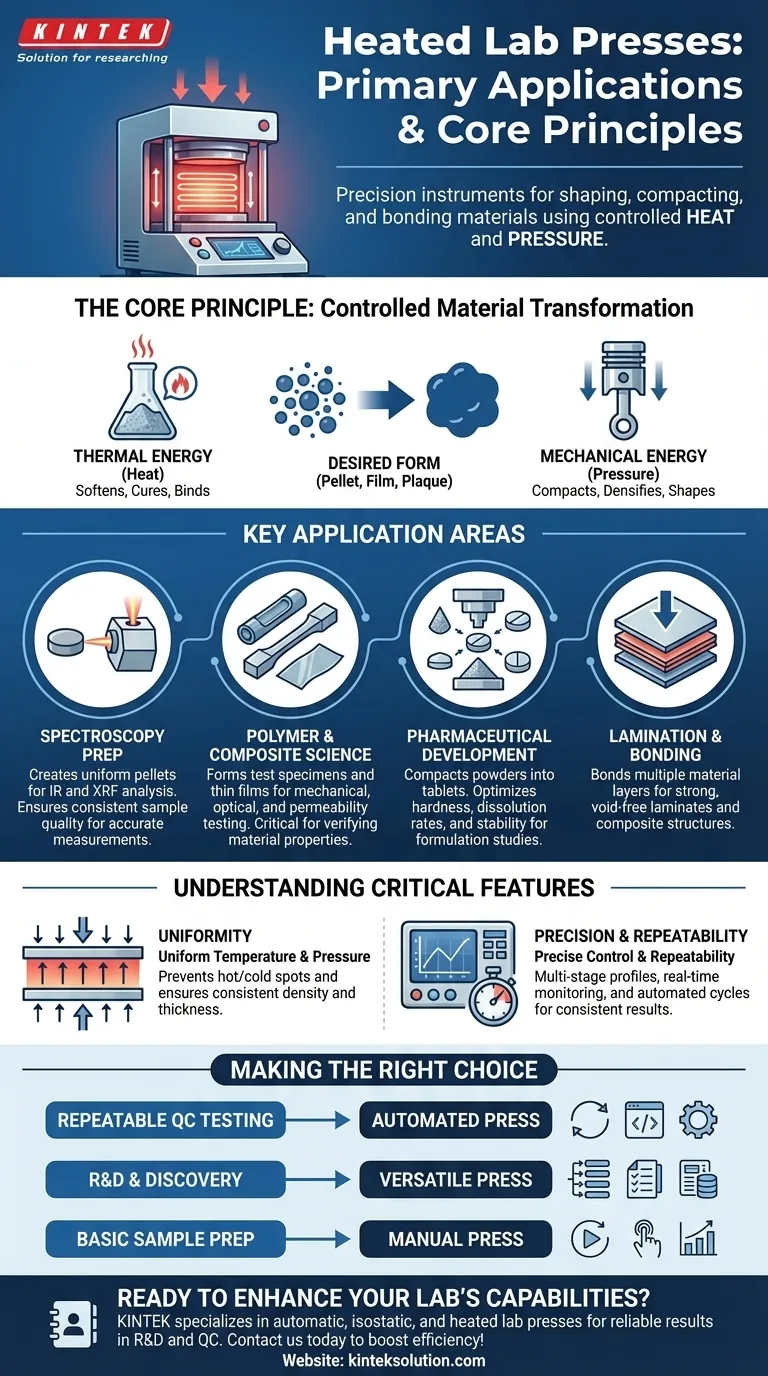
Related Products
- Lab Heat Press Special Mold
- Automatic High Temperature Heated Hydraulic Press Machine with Heated Plates for Lab
- Automatic Heated Hydraulic Press Machine with Hot Plates for Laboratory
- Laboratory Manual Heated Hydraulic Press Machine with Hot Plates
- Heated Hydraulic Press Machine with Heated Plates for Vacuum Box Laboratory Hot Press
People Also Ask
- Why is external stack pressure necessary for anode-free solid-state batteries? Ensure Stable Cycling & Prevent Failure
- What is the purpose of applying high-pressure co-pressing to electrodes and electrolytes during the assembly of an all-solid-state sodium-sulfur battery? Build High-Performance Solid-State Batteries
- What are the key benefits of using heated lab presses? Achieve Precision and Versatility in Material Science
- How is a heated hydraulic press used in material testing and research? Unlock Precision in Material Analysis
- What is the key role of a precision heated lab press in the preparation of solid-state polymer electrolyte membranes (SPEs)? Ensure Electrochemical Consistency
